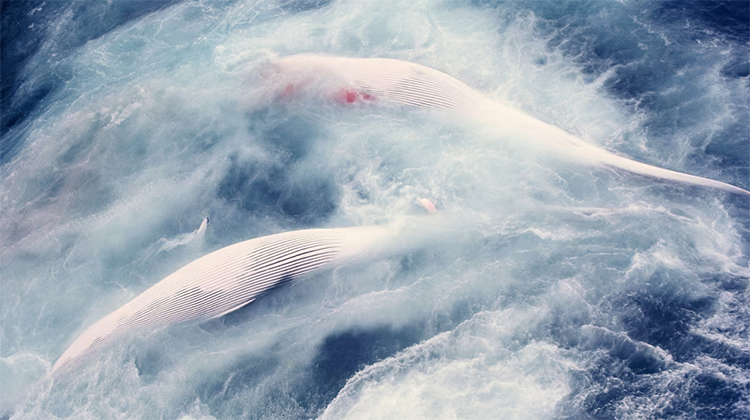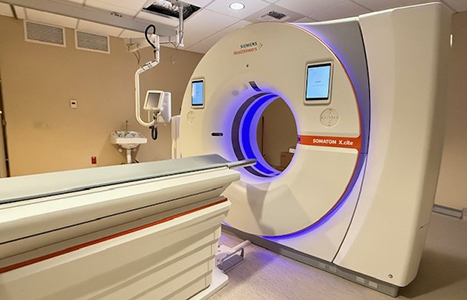The mass slaughter of whales destroyed far more than the creatures themselves.
||| FROM THE ATLANTIC |||
In the 20th century, the largest animals that have ever existed almost stopped existing. Baleen whales—the group that includes blue, fin, and humpback whales—had long been hunted, but as whaling went industrial, hunts became massacres. With explosive-tipped harpoons that were fired from cannons and factory ships that could process carcasses at sea, whalers slaughtered the giants for their oil, which was used to light lamps, lubricate cars, and make margarine. In just six decades, roughly the lifespan of a blue whale, humans took the blue-whale population down from 360,000 to just 1,000. In one century, whalers killed at least 2 million baleen whales, which together weighed twice as much as all the wild mammals on Earth today.
All those missing whales left behind an enormous amount of uneaten food. In a new study, the Stanford ecologist Matthew Savoca and his colleagues have, for the first time, accurately estimated just how much. They calculated that before industrial whaling, these creatures would have consumed about 430 million metric tons of krill—small, shrimplike animals—every year. That’s twice as much as all the krill that now exist, and twice as much by weight as all the fish that today’s fisheries catch annually. But whales, despite their astronomical appetite, didn’t deplete the oceans in the way that humans now do. Their iron-rich poop acted like manure, fertilizing otherwise impoverished waters and seeding the base of the rich food webs that they then gorged upon. When the whales were killed, those food webs collapsed, turning seas that were once rainforest–like in their richness into marine deserts.
But this tragic tale doesn’t have to be “another depressing retrospective,” Savoca told me. Those pre-whaling ecosystems are “still there—degraded, but still there.” And his team’s study points to a possible way of restoring them—by repurposing a controversial plan to reverse climate change.
Baleen whales are elusive, often foraging well below the ocean’s surface. They are also elastic: When a blue whale lunges at krill, its mouth can swell to engulf a volume of water larger than its own body. For these reasons, scientists have struggled to work out how much these creatures eat. In the past, researchers either examined the stomachs of beached whales or extrapolated upward from much smaller animals, such as mice and dolphins. But new technologies developed over the past decade have provided better data. Drones can photograph feeding whales, allowing researchers to size up their ballooning mouths. Echo sounders can use sonar to gauge the size of krill swarms. And suction-cup-affixed tags that come with accelerometers, GPS, and cameras can track whales deep underwater—“I think of them as whale iPhones,” Savoca said.
Using these devices, he and his colleagues calculated that baleen whales eat three times more than researchers had previously thought. They fast for two-thirds of the year, subsisting on their huge stores of blubber. But on the 100 or so days when they do eat, they are incredibly efficient about it. Every feeding day, these animals can snarf down 5 to 30 percent of their already titanic body weight. A blue whale might gulp down 16 metric tons of krill.
Surely, then, the mass slaughter of whales must have created a paradise for their prey? After industrial-era whalers killed off these giants, about 380 million metric tons of krill would have gone uneaten every year. In the 1970s, many scientists assumed that the former whaling grounds would become a krilltopia, but instead, later studies showed that krill numbers had plummeted by more than 80 percent.
The explanation for this paradox involves iron, a mineral that all living things need in small amounts. The north Atlantic Ocean gets iron from dust that blows over from the Sahara. But in the Southern Ocean, where ice cloaks the land, iron is scarcer. Much of it is locked inside the bodies of krill and other animals. Whales unlock that iron when they eat, and release it when they poop. The defecated iron then stimulates the growth of tiny phytoplankton, which in turn feed the krill, which in turn feed the whales, and so on.
Just as many large mammals are known to do on land, the whales engineer the same ecosystems upon which they depend. They don’t just eat krill; they also create the conditions that allow krill to thrive. They do this so well that even in the pre-whaling era their huge appetites barely dented the lush wonderlands that they seeded. Back then, krill used to swarm so densely that they reddened the surface of the Southern Ocean. Whales feasted so intensely that sailors would spot their water spouts punching upward in every direction, as far as the eye could see. With the advent of industrial whaling, those ecosystems imploded. Savoca’s team estimates that the deaths of a few million whales deprived the oceans of hundreds of millions of metric tons of poop, about 12,000 metric tons of iron, and a lot of plankton, krill, and fish.
Whaling proponents sometimes argue that whales’ gargantuan appetites threaten the food security of coastal nations, dismissing modeling studies that disprove this idea, according to Leah Gerber, a marine-conservation biologist at Arizona State University who wasn’t involved in the new study. By contrast, the empirical results from Savoca’s study “will be hard to refute,” Gerber told me.

Hulton-Deutsch Collection / Corbis / Getty
The new study, says Kelly Benoit-Bird, a marine biologist at the Monterey Bay Aquarium Research Institute, in California, is an important reminder of how “exploited species are part of a complex web, with many effects cascading from our actions.” Killing a whale leaves a hole in the ocean that’s far bigger than the creature itself.
There are more whales now than there were even a few years ago—in early 2020, scientists rejoiced when they spotted 58 blue whales in sub-Antarctic waters where mere handfuls of the animals had been seen in years prior. But that number is still depressingly low. “You can’t bring back the whales until you bring back their food,” Savoca said. And he thinks he knows how to do that.
READ FULL ARTICLE: https://www.theatlantic.com/science/archive/2021/11/whaling-whales-food-krill-iron
**If you are reading theOrcasonian for free, thank your fellow islanders. If you would like to support theOrcasonian CLICK HERE to set your modestly-priced, voluntary subscription. Otherwise, no worries; we’re happy to share with you.**








